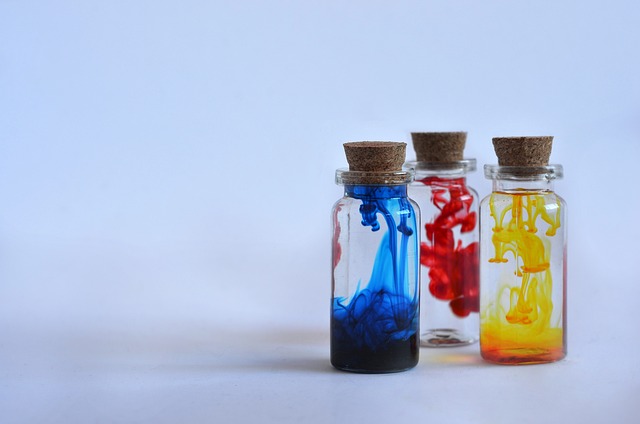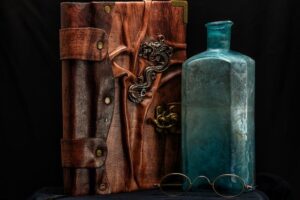Introduction: Why Magic Mattered in Ancient Egypt
Magic in ancient Egypt was not an extracurricular belief or an optional superstition — it was an integral, everyday technology of life. Egyptians used spells, charms, incantations, and rituals to shape fate, protect the body, and mediate between humans and the gods. What modern readers often call “magic” (from the Greek mageia) the Egyptians themselves called heka, a fundamental cosmic force woven into the fabric of existence.
Heka: The Power Behind Word and Action
Heka was both a god and the practice of activating the world through speech, gesture, and material objects. It worked because words had weight and acts had consequence: gods listened, demons could be bound, and the dead could be guided — provided that the correct names, formulas, and materials were used.
Magic as Practical Technology
For ordinary Egyptians, magic was practical: protection from illness, securing fertility, controlling hostile forces, aiding in childbirth, and ensuring safe passage to the afterlife. For elites and priests it also had a state and cult dimension: protecting the king, consecrating temples, and keeping maat (cosmic order) intact.
Where Spells Were Found: Textual and Material Sources
The archaeological and textual record gives us three major bodies where spells appear:
Pyramid Texts
Carved on the walls of Old Kingdom royal tombs, these are among the earliest surviving religious texts. They largely concern the king’s resurrection and ascent into the sky, including ritual utterances meant to animate and empower the deceased ruler.
Coffin Texts and the Book of the Dead
As burial practices became more widespread, magical texts moved from pyramid walls onto coffins and papyri. The Coffin Texts democratized afterlife protections, while the New Kingdom’s Book of the Dead (a modern name) collected spells designed to guide and defend the deceased through the dangerous terrain of the Duat (underworld).
Everyday Magic: Ostraca, Amulets, and Graffiti
Not all spells were grand. Many were short, practical formulas scratched on potsherds or written on ostraca, inscribed on amulets, or scrawled in temple graffiti. These provide a vivid sense of how magic saturated daily life.
Types of Spells and Magical Practices
Protective Spells
Protective spells were arguably the most common. They defended against disease, malevolent spirits, and the evil eye. Amulets — shaped like scarabs, eyes, or small gods — were charged with wording or ritual acts to make them effective.
Curative and Medical Magic
Ancient Egyptian medicine combined empirical treatments with spells. A healer might prescribe an herb and recite an incantation to drive out the cause of illness, often personified as a hostile spirit or tongue of demons.
Example Formula
A typical curative formula might name the disease and command it to depart, invoking a deity as witness. The power lay in precision: naming, addressing, and commanding a force by giving it no place to hide.
Love and Fertility Spells
Love magic appears frequently — from erotic recipes to spells designed to ensure conception. These rituals often used symbolic acts (knots, binding, ointments) and invoked deities associated with creation and sexuality.
Binding and Unbinding Spells
Some spells bound harmful forces or enemies; others unbound obstacles or freed the dead. The act of binding could be as simple as tying knots or as complex as reciting long formulas while manipulating images of the target.
Divination and Oracles
Divination — from dream-interpretation to consulting oracular deities — coexisted with spells. Dreams were a common way the gods communicated, and many individuals kept dream-books to interpret symbolic visions.
Who Practiced Magic?
Priests and Temple Magicians
Priests were trained in ritual and text; they performed state and cult magic on behalf of gods and kings. Temples served as hubs of magical knowledge, where sacred words were stored, taught, and ritually enacted.
Household Spell-Users and Specialists
Outside temples, households kept protective traditions. There were also professional magicians and exorcists, sometimes distinguished from priests — specialists hired to perform tricky charms or to negotiate with dangerous spirits.
Gender and Magic
Women are well-attested as active practitioners: mothers guarding children, midwives invoking spells during birth, and female practitioners of love-magic. Magic was not the sole province of men.
Materials, Symbols, and the Mechanics of Ritual
Words, Names, and True Names
Words were active — vocalized or written, they shaped reality. Knowing a god’s or demon’s true name gave the speaker control; concealment of names protected the powerful. This is why many spells painstakingly list names and genealogies.
Images, Figurines, and Written Representations
Magical figurines, images, and model objects served as focal points. A bound figurine might represent an enemy; breaking it symbolically destroyed the target. Papyri with vignettes accompanied many spells to provide visual reinforcement.
Amulets and Materials
Certain materials were prized: faience for its lustrous life-like quality, gold for its association with the sun and divinity, and stones like carnelian and lapis for their symbolic properties. These materials, combined with textual power, produced tangible protective devices.
Sample Spell Types (Illustrative, Not Literal Translations)
Spells of Protection for the Home
Short incantations might be painted above doors or whispered each night to repel intruders and spirits. Often they invoked household deities and specified boundaries the spirits must not cross.
Funerary Spells for the Dead
Many funerary spells instruct the deceased on what to say at checkpoints, how to transform into birds or lotus, and how to avoid hostile judges. These spells work like user manuals for the afterlife: clear steps, passwords, and actions.
Spell Structure
Typical spells include an address (who is being spoken to), a command (do or do not), and often a witness (a deity or sacred force) to enforce compliance.
Ethics, Authority, and Social Perception
Magic: Good, Ambiguous, or Dangerous?
Magic could be seen as righteous or dangerous depending on context. State and temple magic was legitimate and central to maat. Conversely, private spells aimed at harming others were socially suspect — though not unheard of. Laws and literature show concern about abusive or rogue magical action.
Regulation and Legitimation
Legitimacy often hinged on ritual context and proper authority. Priests, by virtue of their roles and training, were licensed to manipulate powerful forces; household spells were legitimate within family practice, but accusations of illicit witchcraft could occur.
Decline, Transformation, and Legacy
From Paganism to Christian and Islamic Eras
As Egyptian religion transformed under Greek, Roman, Christian, and Islamic rule, many magical practices adapted. Coptic and later Arabic magical traditions absorbed and transformed older spells, preserving motifs, names, and ritual forms in new syntactic frames.
Modern Reception
Contemporary interest in Egyptian magic ranges from academic study to occult appropriation. Scholars reconstruct contexts from archaeology and papyri; popular culture often romanticizes or distorts the practices. It’s important to distinguish scholarly evidence from modern inventions.
Conclusion: What Spells Tell Us About Ancient Egypt
Ancient Egyptian spells and magic reveal a society that perceived reality as porous and responsive to human action. Spells show how language, material culture, and ritual co-operated to sustain life, ward off chaos, and imagine survival beyond death. Rather than being marginal, magic was a central technology of coping — social, psychological, and metaphysical — in an ancient civilization that consistently tried to make meaning out of uncertainty.
Further Thought
When reading spells, remember they are both practical and poetic devices. They instruct, name, and evoke. They are treasures of cultural imagination and testimony to a people deeply invested in shaping their world through the power of word and rite.
Keywords: heka, amulets, Book of the Dead, ritual, maat.




